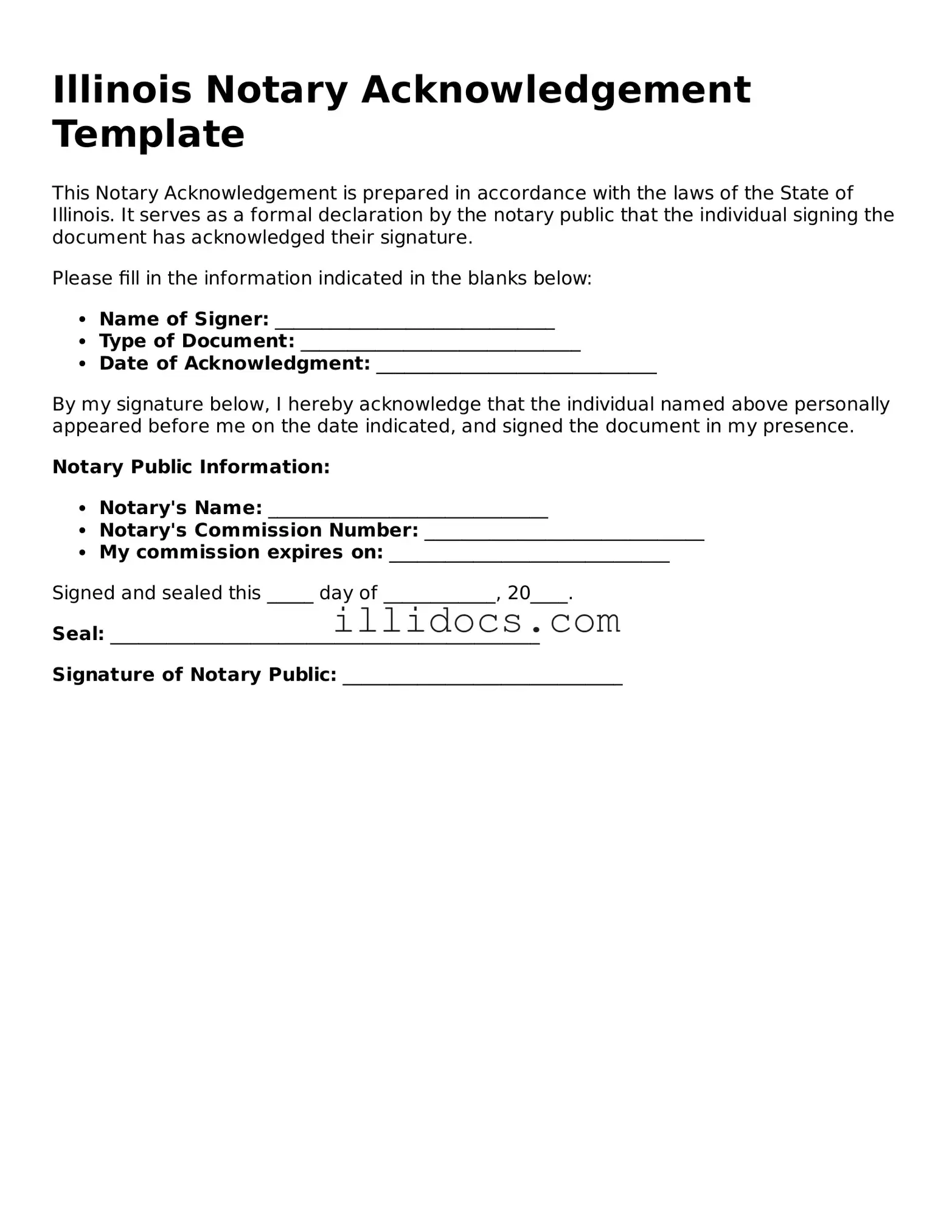What is an Illinois Notary Acknowledgement form?
The Illinois Notary Acknowledgement form is a document used to verify that a signature on a legal document is authentic. It is commonly required when signing deeds, mortgages, and other important documents. The notary public confirms the identity of the signer and witnesses the signing process, providing an extra layer of security and trust in legal transactions.
When do I need to use a Notary Acknowledgement form?
You typically need a Notary Acknowledgement form when you are signing documents that require notarization to be legally binding. This includes real estate transactions, powers of attorney, and certain court documents. If you’re unsure whether your document requires notarization, it’s a good idea to check with a legal professional.
Who can serve as a notary public in Illinois?
In Illinois, a notary public must be at least 18 years old, a resident of Illinois or a legal resident of the United States, and must complete a notary public application. Additionally, they must pass a background check and take an oath of office. Once appointed, notaries can perform their duties throughout the state.
What information is required on the Notary Acknowledgement form?
The form generally requires the following information: the name of the signer, the date of the acknowledgment, the type of document being acknowledged, and the notary's signature and seal. This information helps to ensure that the document is properly notarized and can be used in legal situations.
Is there a fee for notarizing a document in Illinois?
Yes, notaries in Illinois are allowed to charge a fee for their services. The maximum fee that a notary can charge for an acknowledgment is set by state law. As of now, this fee is typically around $1 to $2 per signature. It’s always a good idea to confirm the fee with the notary before getting your document notarized.
Can I notarize my own documents in Illinois?
No, you cannot notarize your own documents in Illinois. Notaries must remain impartial and cannot act as a notary for documents in which they have a personal interest. This rule helps to maintain the integrity of the notarization process.
How long is a Notary Acknowledgement valid in Illinois?
A Notary Acknowledgement does not have a specific expiration date. However, the validity of the document itself may depend on the type of document being acknowledged. It’s important to check the requirements for the specific document to ensure that it remains valid for its intended purpose.
